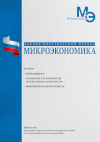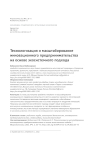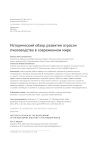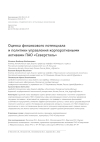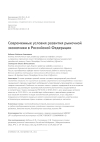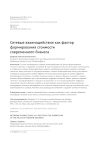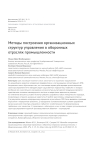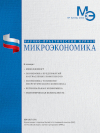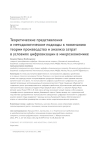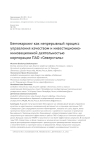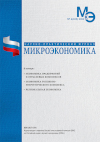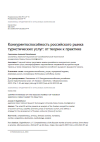DOI: 10.33917/mic-5.106.2022.50-61
This article discusses benchmarking as a continuous process of quality management and investment and innovation activities on the example of PJSC Severstal Corporation.
The definition of the concept of «benchmarking» is given, its purpose, tasks, stages of implementation are shown. A comparison of Russian and foreign approaches in benchmarking is presented.
The results of benchmarking are shown, which identified shortcomings and gave directions for improving the efficiency of PJSC Severstal. Companies need to bet more on R&D and get better results from it. In recent years, against the background of the pandemic and economic sanctions, PJSC Severstal faced a lack of funds for the modernization and reconstruction of production facilities, with a mismatch with the structure of supply and demand.
The authors propose to reduce costs, develop the metal products market and introduce innovative technologies.
References:
1. Al-Yavar A.A., Zharikov R.V., Bezpalov V.V. Improving the quality of products (services) of commercial organizations. Modern Economy Success. 2020;6:120-126. (In Russ).
2. Garipov A.S. The genesis of benchmarking in the time continuum. Bulletin of the Kazan State Financial and Economic Institute. 2007;4 (9):70-74. (In Russ.).
3. Devlet-Geldy G.K. Benchmarking as a tool for competitive development of modern enterprises. Problems of the economy. 2016;1 (71):42-46. (In Russ.).
4. Eroputova O.A. Analysis and evaluation of cash flows from investment operations of PJSC Severstal. The Scientific Heritage. 2022;86-3(86):17-20. (In Russ.).
5. Kozhemyako A.P. Benchmarking as a tool for analyzing target client groups. Quality management. 2020;4:314-322. (In Russ.).
6. May I. Knowledge management, production efficiency and benchmarking. Rationing and remuneration of labor in industry. 2010;7:52-55. (In Russ.).
7. Ostrovskaya V.N. Theory of SWOT analysis in competitive integration benchmarking. Economic sciences. 2008;47:64-67. (In Russ.).
8. Startseva M.V. The problem of using benchmarking in modern conditions. Economy and society. 2015;2-5(15):943-944. (In Russ.).
9. Silaeva A.V. Analysis of the financial results of the company’s activities on the example of PJSC Severstal for 2019-2021. A young scientist. 2022;23(418): 577-580. (In Russ.).
10. Tyupin N.A. Modern principles of benchmarking. Student. 2020:34-1(120):39-41. (In Russ.).
11. Chekeeva N.K. Benchmarking: conceptual apparatus. Bulletin of the Magistracy. 2017;12-3 (75):46-47. (In Russ.).
12. Shakirova N.N., Zhukovskaya S.L. Problems and possibilities of using financial benchmarking. Topical issues of the modern economy. 2022;4:609-616. (In Russ.).
13. Shuvarikov M.D. Principles of IFRS in the financial analysis of PJSC Severstal and PJSC NLMK. Economic security. 2021;4(3):839-852. (In Russ.).
14. Bezpalov V.V., Lochan S.A., Fedyunin D.V., Solopova N.A., Gorin D.S. Electric power industry development in the russian federation considering the structural trends of the world economy. Environment, Development and Sustainability. 2021.


